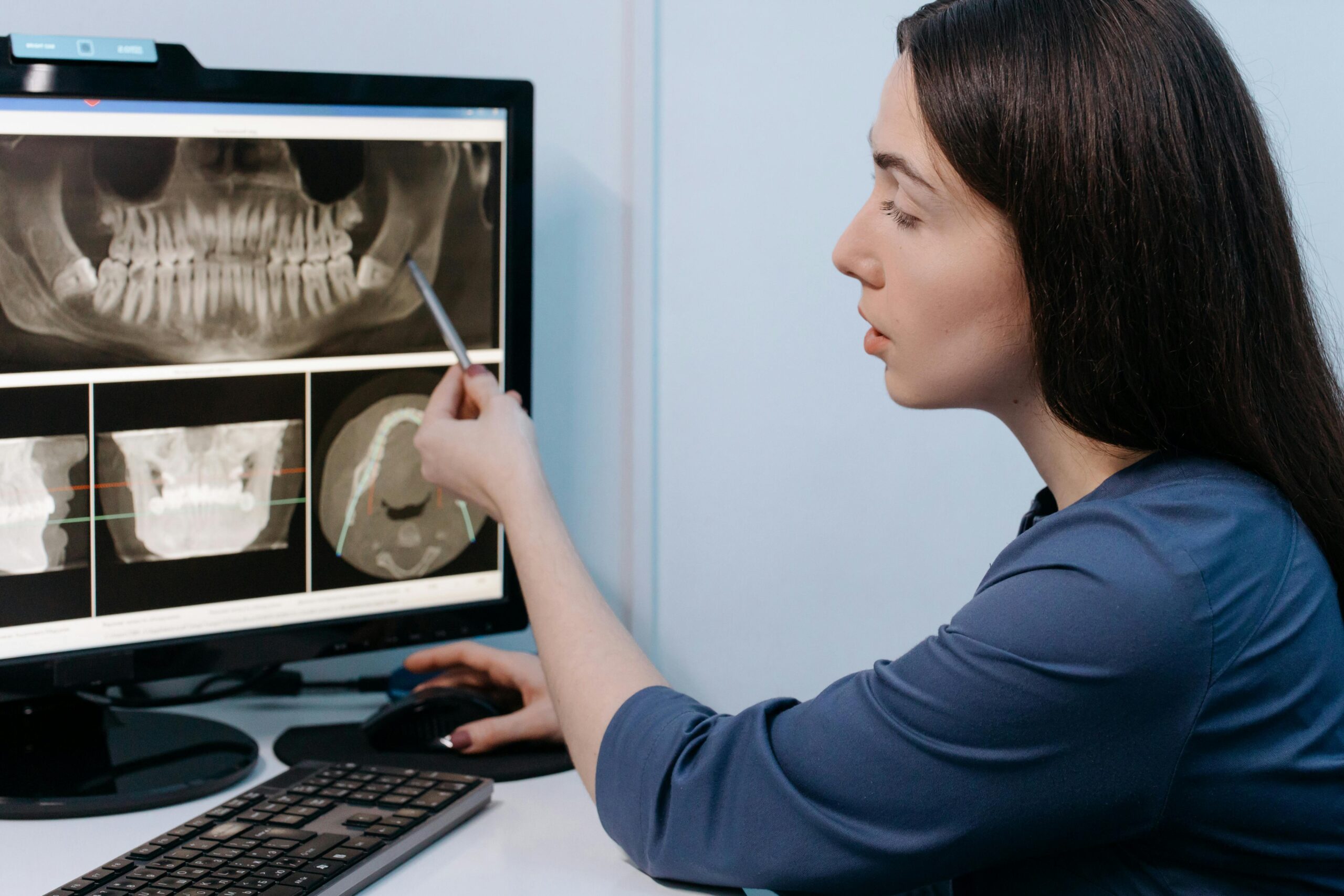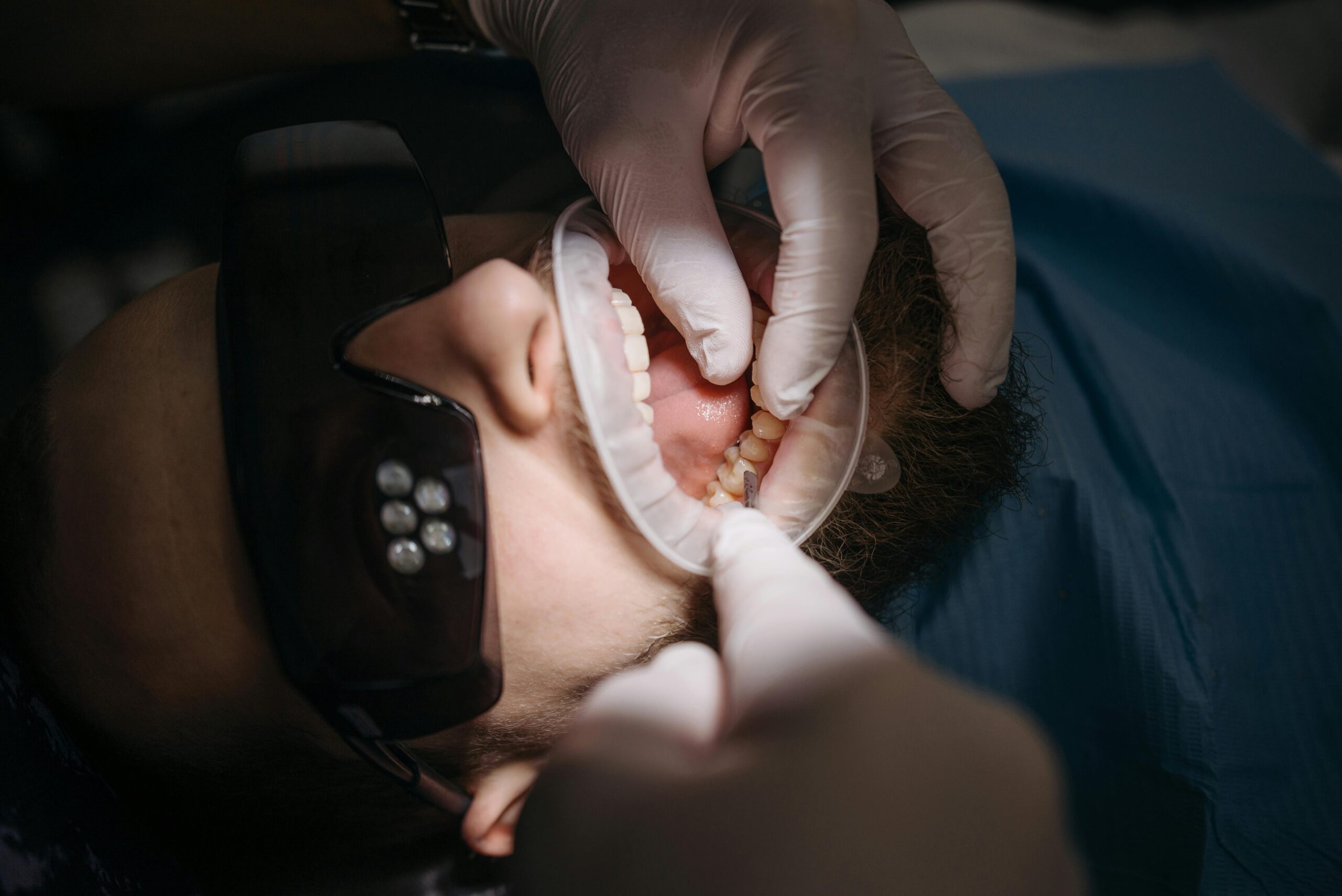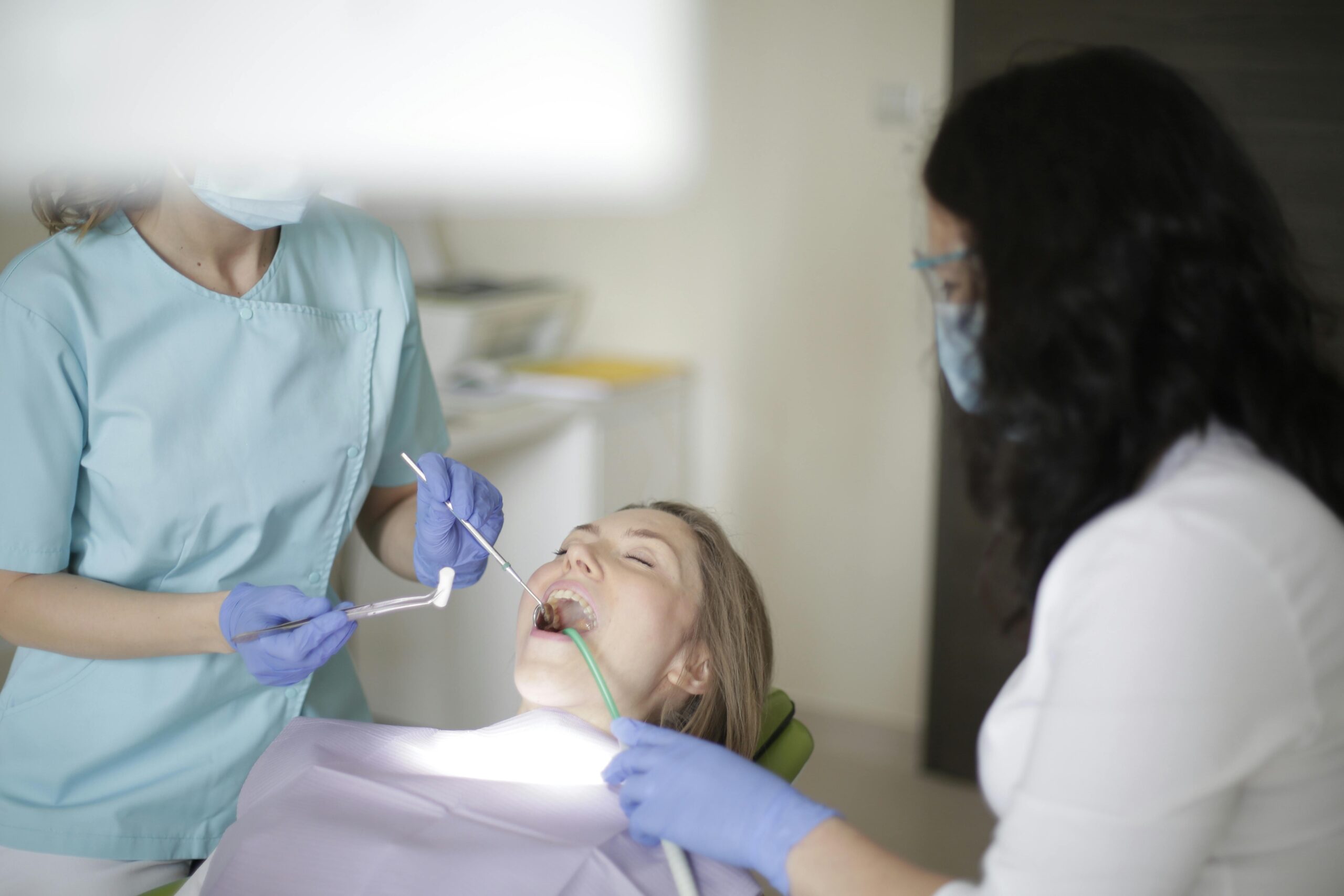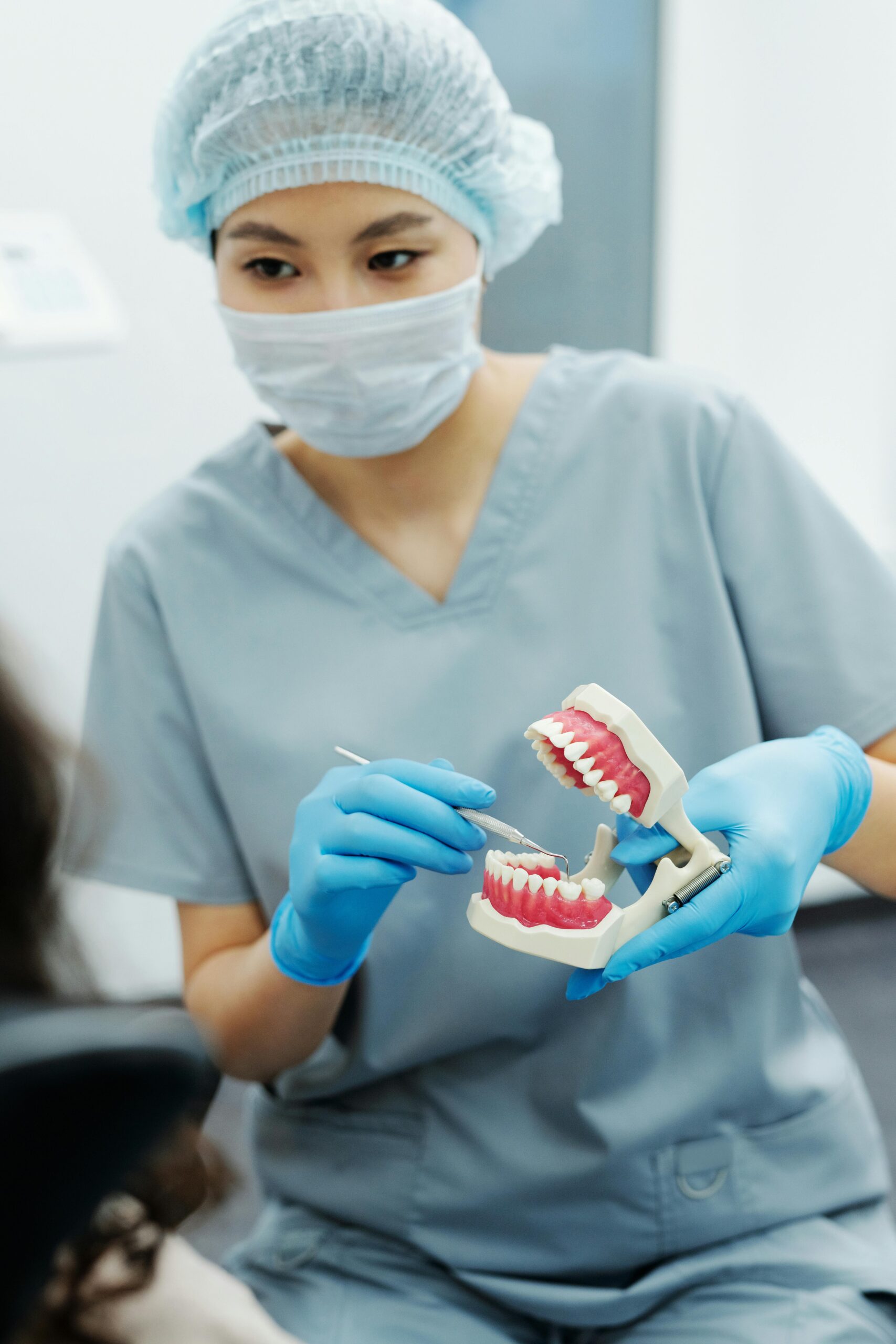Why Finding a Dentist Near Me Matters
Seeing a dentist near me makes care easier and more consistent. Short travel means you’re more likely to keep regular checkups and cleanings, catch small issues early, and get help fast when something hurts. A nearby, local dentist also fits better into busy school, work, or caregiving schedules. Over time, that convenience supports steady oral health for you and your family.
- It’s simpler to book and keep routine visits.
- Urgent problems like toothaches or chips can be seen sooner.
- Treatments that need several visits are easier to complete.
- Follow-ups and adjustments take less time from your day.
- Kids and adults can coordinate care with one office.
- Travel barriers (traffic, distance) are less likely to delay care.
Some treatments work best when you can return easily for planned steps. For example, timely root canal treatment can require diagnosis, therapy, and follow-up to keep a tooth comfortable and healthy. Living close by helps you complete care on schedule without long drives. Learn more about our timely root canal treatment.
Proximity also matters during urgent needs. If a wisdom tooth flares up, being close can reduce the time from pain to relief and lower the stress of getting to the office quickly. Read about options for urgent wisdom tooth removal.
A nearby, family dentist can also coordinate preventive visits around work and school, so small problems are caught before they become bigger ones. To plan your visit, check our current hours and consider travel time from home, school, or the office.
Tips for Choosing a Local Dentist
Pick a local dentist by focusing on access, scope of care, and clear communication. A nearby office with hours that fit your routine, a team that explains options plainly, and services you’re likely to need will make care easier to start and keep. When you search “dentist near me,” compare a few offices for experience, technology, and support during urgent needs.
Start with location and logistics. Short travel from home, school, or work helps you keep regular checkups and follow-ups without stress. Ask about parking, accessibility, and how quickly the office can see you if you have a sudden toothache or a broken filling. Consistent, convenient access often leads to more complete treatment and better long‑term results.
Look at the range of services. Most people need prevention, cleanings, and routine repairs; many also need esthetic or tooth‑replacement options. Check whether the office offers durable, tooth‑colored restorations, including crowns and bridges supported by modern methods, so you can complete more of your care in one place. If they coordinate with specialists, ask how referrals are handled and how records are shared.
Comfort matters. If dental visits make you nervous, ask about gentle options to ease anxiety and help you sit through care safely. Offices that offer oral sedation for appropriate patients can make longer or more complex appointments manageable. Also consider the feel of the team: Are they patient, respectful, and willing to answer questions without rushing?
Evaluate communication and preventive focus. You should leave with a simple plan, written instructions, and an understanding of what comes next. Clear explanations of benefits, risks, and alternatives help you choose what fits your goals and timeline. Reviews and word‑of‑mouth can give clues about punctuality and follow‑through, but a quick meet‑and‑greet is often the best way to see if the office is a good fit for you and your family.
What to Look for in a Dentist Nearby
A good nearby dentist makes care easy to start and keep. When you search “dentist near me,” look for convenient access, a full range of services, and a team that explains your choices in plain language. Strong safety practices, clear follow‑up, and respect for your time also matter.
Start with location and logistics. The office should be simple to reach from home, work, or school, with easy parking and accessible entry. Ask about early, evening, or weekend options and how urgent toothaches are handled the same day. Reliable scheduling, short wait times, and smooth check‑in help you stay on track with cleanings and follow‑ups.
Consider the scope of care and the tools they use. Many people need preventive visits, fillings, and crowns, but it helps when one office can also handle complex or longer procedures. Digital X‑rays and modern imaging help with accurate diagnosis, and thoughtful comfort options can make visits easier. If you have high anxiety or require advanced procedures, check whether the office offers experienced deep sedation for select treatments.
Look for experience that fits your goals. Families may want providers who see adults and kids in the same place. If straighter teeth are on your list, ask whether they provide clear aligner treatment with Invisalign so you can address alignment without a referral across town. If you might need dentures or implant options later, ask how they plan and coordinate those cases so your records and timelines stay organized.
Evaluate communication and safety. You should leave each visit knowing what was done, what comes next, and the benefits and risks of each option. Look for a written plan that matches your timeline and health needs, plus clear instructions for home care. Notice cleanliness, sterilization indicators, and how the team uses protective equipment. A dentist who listens, answers questions without rushing, and follows up after treatment helps you feel confident about your care.
The Importance of a Family Dentist
A family dentist gives your whole household one trusted place for care. When you choose a family dentist near me, everyone—from kids to grandparents—can get checkups, cleanings, and advice in the same office. That continuity makes it easier to spot changes early, plan care calmly, and get timely help when something hurts.
Continuity matters because your dentist knows your medical history, past X‑rays, and what has worked for you. Seeing the same team over time helps catch small problems before they grow, tailor prevention to your risk, and reduce gaps in treatment. Research also links regular use of dental services with keeping more functional teeth into later life, underscoring the value of steady, preventive visits [1].
A single home base streamlines life’s logistics. One office can coordinate appointments around school and work, give clear guidance during urgent toothaches, and follow up to be sure you’re healing well. Many needs are handled under one roof, and referrals—when needed—move faster because your records are already organized. If a family member is missing a tooth, your dentist can discuss timing and options, including partial dentures to restore chewing and smile function, and help you plan the next steps.
A family‑focused team also adapts to each stage of life. Children may need sealants, fluoride, and simple tips to build good habits. Teens and adults benefit from monitoring for gum health, clenching, or sports‑related chips. When minor chips or gaps affect confidence, your dentist can explain conservative choices like tooth‑colored dental bonding for small repairs. Older adults may need extra care around dry mouth, medications, and prosthetic fit. Through it all, the same office keeps your plan clear and your records in one place, so care stays consistent and easier to complete.
Questions to Ask a New Patient Dentist
Bring clear, practical questions that help you understand your diagnosis, choices, timeline, and follow‑up. Good questions cover how urgent issues are handled, what to expect during and after care, and how the office will communicate with you. This makes it easier to decide if the fit is right when you search for a dentist near me.
Start with your oral health status. Ask what the main problem is, what evidence supports it (exam findings, photos, X‑rays), and what options you have—including benefits, risks, and what happens if you wait. Clarify how many visits are needed, how long you will be in the chair, and what comfort steps are available. Request simple home‑care instructions tailored to your needs.
Explore prevention and maintenance. Ask about your gum health, cavity risk, and how often cleanings and X‑rays are recommended for someone like you. If you have esthetic goals, ask which options are conservative and durable, such as thoughtfully planned porcelain veneers for shape and color changes, and what upkeep those choices need over time.
Cover logistics and safety. Ask how the office handles same‑day toothaches, after‑hours questions, and post‑op check‑ins. Learn how records are shared if you need a specialist, and how the team coordinates referrals. You can also ask about sterilization, protective equipment, and radiation‑minimizing tools like digital X‑rays, so you know what to expect at each visit.
Discuss planning if you anticipate bigger treatment. For missing teeth, ask how they plan tooth replacement, the steps involved, and how they confirm fit and function—this may include options like snap‑in implant dentures for added stability. Clarify how the office sequences care so you can pace visits around work, school, or caregiving.
Finally, bring a medication list and any past X‑rays or reports. Ask how medical conditions or medicines may affect anesthesia, healing, or gum health. Make sure you leave with a written summary of today’s findings, your next steps, and who to contact if questions come up between visits.
How to Evaluate a Dental Office Near Me
Evaluate a dental office by looking at access, safety, and clear communication. A good fit is easy to reach, follows strong infection‑control routines, explains choices in plain language, and can handle most of the care you’re likely to need. Pay attention to how the team greets you, how questions are answered, and whether timelines and next steps are clear. When you search “dentist near me,” these points help you choose confidently.
Start with logistics and responsiveness. Notice parking and accessibility, how on‑time the schedule runs, and whether urgent toothaches are assessed quickly. Ask how the office handles after‑hours concerns and follow‑ups after procedures. Reliable systems make it simpler to keep cleanings, checkups, and multi‑visit treatment on track.
Look closely at safety and cleanliness. You should see tidy operatories, protective barriers, and instrument pouches opened chairside. Hand hygiene before gloves, surface disinfection between patients, and appropriate masks and eyewear are routine in well‑run offices. Water bottles or closed waterlines for treatment units and clear sterilization indicators are additional signs that infection control is taken seriously.
Evaluate diagnosis and communication. Digital X‑rays and intraoral photos help the dentist show you what they see, so you understand why a treatment is recommended. You should receive a simple plan that outlines options, benefits, risks, and expected number of visits. If you have esthetic goals, ask how the office approaches conservative improvement and whether they offer professional teeth whitening to brighten natural enamel safely.
Consider scope of care and coordination. Many people prefer completing most services in one place, from prevention to restorations, with clear referrals only when needed. If you or a family member may need advanced tooth replacement, ask how they plan complex cases and whether they provide options like full‑arch All‑on‑4 implant dentures for stable chewing. This helps you understand how the office supports both today’s needs and future goals.
Finally, trust how the visit feels. A team that listens, explains without rushing, and respects your time is worth prioritizing when comparing a dental office near me. The right match makes routine care smoother and helps you stay on schedule when something urgent comes up.
Finding the Best Dentist Near Me
The “best” dentist is the one who fits your needs, schedule, and comfort level while delivering safe, thorough care. Start by defining what matters most—access, scope of services, and clear communication—then compare a few nearby offices. A short meet‑and‑greet or new‑patient exam helps you see how the team explains findings and plans next steps.
Convenience supports consistency. Choose an office that’s easy to reach from home, school, or work, with hours that match your routine. Ask how they handle urgent toothaches, after‑hours questions, and follow‑up calls. Reliable scheduling, short waits, and simple check‑in make it more likely you’ll keep regular cleanings and complete multi‑visit treatment without stress.
Look for a full scope of care that matches your goals. Most people need prevention, fillings, and occasional crowns; others want alignment or tooth replacement. It helps when one office can coordinate these needs smoothly and share records with specialists when required. If you feel anxious, ask about comfort options and how they tailor visits for patients who need extra time or support.
Evaluate how the dentist diagnoses and communicates. Digital X‑rays and photos make it easier to understand why care is recommended. You should leave with a clear, written plan that outlines options, expected visits, benefits, and risks, plus simple home‑care instructions. If you want a second opinion, a good office will provide copies of your records on request and explain timing considerations.
Finally, trust how the visit feels. A respectful, calm team that listens, answers questions without rushing, and follows up after treatment is worth prioritizing when you search “dentist near me.” Read recent reviews for themes like punctuality and follow‑through, but let your own experience guide you. The best dentist near me is the one who helps you stay on track today and plans thoughtfully for tomorrow.
Understanding Dental Services Offered
Understanding dental services helps you match what an office provides to what you need now and later. Most care falls into prevention, repair, gum treatment, tooth replacement, comfort options, and, when needed, minor oral surgery. When you search “dentist near me,” scan the service list and ask how each option fits your goals and timeline.
Prevention is the base. Checkups, cleanings, X‑rays, sealants, and fluoride help find problems early and protect at‑risk teeth. This is especially important for kids, since tooth decay can appear on specific teeth and surfaces even in preschool years [2]. A clear preventive plan keeps visits simple and reduces the need for urgent care.
When decay is present, dentists choose the least invasive treatment that will last. Early spots may be managed with non‑ or minimally invasive methods; deeper cavities may need fillings or, if larger, inlays, onlays, or crowns. Many parents appreciate having conservative choices for children’s cavities when appropriate, highlighting the value of discussing options before treatment begins [3]. You can ask a new patient dentist how they decide between these approaches and what home care supports success.
Gum health is another core service. Your dentist assesses gum inflammation, bone levels, and risk, then recommends cleanings or periodontal therapy. Teams often use standard “staging and grading” language to describe disease and guide follow‑up; making sure you understand these terms helps you stay engaged with home care and maintenance visits [4]. Clear explanations and written instructions make it easier to track progress over time.
Tooth replacement and complex care round out the menu. Root canal therapy can save a painful tooth; extractions address teeth that cannot be restored; and options like bridges, dentures, or implants replace missing teeth. For older adults, maintaining comfortable chewing and oral health is linked with broader daily function, which is one reason a stable, personalized plan matters [5]. Comfort supports such as local anesthesia and, for select patients, sedation can make longer visits more manageable. If you’re comparing offices, ask how they coordinate multi‑step care, outline risks and benefits, and plan follow‑ups so you know what to expect at each stage.
Reviews and Ratings for Local Dentists
Reviews and ratings can help you compare local dentists by showing real patient experiences. Look for recent comments and repeated themes about communication, timeliness, comfort, and follow‑through. Star numbers are useful, but the written details often tell you more about what visits feel like. Use reviews as one part of your decision, along with a quick call or visit to confirm fit.
Focus on patterns, not single posts. A steady stream of recent, specific feedback (for example, “explained X‑rays clearly,” “on time for morning appointments,” or “good follow‑up after a crown”) is more helpful than a few very short ratings. Read how the office responds to concerns; polite, solution‑focused replies suggest the team listens and improves. If an office has many long, thoughtful reviews, weigh those more than a simple star average.
Consider relevance to your needs. If you have dental anxiety, look for notes about gentle care, clear numbing, or calming explanations. If you expect multi‑visit treatment (like a crown, root canal, or aligners), check whether reviewers mention smooth scheduling, clear timelines, and consistent results. Families might scan for comments about children’s visits and easy coordination for school hours.
Check recency and volume. Dental teams, staff, and systems change over time, so feedback from the past year is most useful. A strong average rating with many reviews usually gives a more stable picture than a very high score from only a handful. If older reviews mention issues that newer ones do not, the office may have addressed them.
Compare more than one source. Different sites attract different kinds of comments, so looking in a couple of places can balance extremes. Still, online ratings cannot show clinical quality by themselves. A short meet‑and‑greet or new‑patient exam lets you see how the dentist explains findings, what options you have, and how the team treats your time. When you search “dentist near me,” let reviews guide your short list—then choose based on a clear plan, respectful communication, and how comfortable you feel in the office.
Community Resources for Finding Dentists
You can find local dental care by using trusted community resources such as state dental associations, public health departments, dental schools, and your insurance plan’s directory. These tools help you compare offices by location, services, and access so you can choose confidently when searching for a dentist near me. Many directories also let you filter for language, evening hours, accessibility, or specialty.
Start with your state or county dental association’s “find a dentist” tool. You can search by ZIP code and type of care, then call offices to confirm availability and what ages they serve. For peace of mind, you can verify a provider’s license and any disciplinary history with your state dental board. Local public health departments often keep lists of neighborhood clinics and can point you toward low‑cost or urgent options nearby.
Community health centers and county dental clinics offer care regardless of insurance status and typically accept many plans. They may provide cleanings, fillings, extractions, and referrals for specialty care when needed. If you’re facing an urgent issue, ask whether they have triage or same‑day times. These centers can also help you understand eligibility, paperwork, and follow‑up steps.
Dental schools and residency clinics are another option. Care is provided by students or residents under the supervision of licensed dentists, which can be a good fit if you have time for longer, teaching‑focused appointments. Schools often offer comprehensive services, including prevention, restorations, and selected specialty procedures. Call the clinic to learn how they screen new patients and how many visits your situation might require.
If you have dental coverage, your insurer’s website or app usually has a searchable in‑network list. Confirm the office is still in network and ask about estimated timelines for exams and urgent visits. Medicaid programs also maintain provider directories; your county health department can help you navigate these lists if you’re unsure where to start. You can also dial a community helpline (such as 211 in many areas) for guidance to nearby clinics, nonprofit programs, senior resources, or school‑based services. After you build a short list, check recent patient comments, then call to confirm hours, accessibility, languages served, and how the team handles follow‑up so your care stays on track.
Frequently Asked Questions
Here are quick answers to common questions people have about Finding a Dentist Near You in Glendale, AZ.
- What are the benefits of choosing a dentist close to home?
Choosing a dentist near your home offers several advantages, including convenience and better adherence to dental care routines. You can easily schedule and attend regular checkups without a long commute, which increases the likelihood of catching issues early. Additionally, proximity supports timely visits for urgent needs, like sudden toothaches or dental emergencies. This convenience not only helps maintain oral health but also reduces stress related to travel, especially in busy schedules involving work or school.
- How does having a local dentist improve consistency in dental care?
A local dentist makes it easier to maintain consistent dental care by reducing travel barriers. With a shorter distance to travel, you’re more likely to stick to scheduled checkups and follow-up appointments. Consistent visits help catch developing issues before they become more serious and contribute to steady improvement in your oral health over time. This regular interaction with your dentist also aids in creating a trusted relationship, enhancing overall healthcare outcomes.
- Why is it important to have a dentist nearby during a dental emergency?
Having a nearby dentist during a dental emergency, such as a wisdom tooth problem, can significantly reduce the time from the onset of pain to relief. Quick access to care lowers the stress and discomfort associated with dental emergencies and can prevent complications by addressing issues promptly. Local dentists can provide swifter interventions, ensuring that emergency situations are resolved efficiently, which is crucial for pain management and preventing further dental issues.
- What should I look for when choosing a local dentist for my family?
When selecting a local dentist for your family, consider factors like location, office hours, and the range of services offered. Ensure that the office is easily accessible from your home, work, or school. Check if they can handle urgent dental issues quickly and have a supportive environment for both kids and adults. A family dentist should offer preventive care, routine checkups, and more advanced treatments if needed, in a setting that makes everyone feel comfortable and informed.
- How does a family dentist benefit household oral health care?
A family dentist provides care for all household members in one convenient location, making it easier to manage appointments and build a comprehensive oral health history. This continuity in care helps spot oral health changes early and allows the dentist to tailor preventive strategies to each family member’s needs. Seeing the same team regularly strengthens trust and leads to better communication, ensuring everyone receives consistent, personalized care over time.
References
- [1] Education- and income-based inequalities of functional dentition by dental service utilization. (2025) — PubMed:40585908 / DOI: 10.3389/froh.2025.1557008
- [2] Anatomical distribution and severity of dental caries by tooth and surface in preschool children from Costa Rica: a cross-sectional descriptive study. (2025) — PubMed:41024134 / DOI: 10.1186/s12903-025-06906-2
- [3] ‘How Good to Finally Have Options!’ A Qualitative Reflexive Thematic Analysis Exploring Parents’ Perceptions of Non-Invasive and Minimally Invasive Caries Management Strategies. (2025) — PubMed:40976872 / DOI: 10.1111/cdoe.70025
- [4] From primary to secondary care level: Assessing patient retention of periodontal staging and grading information. (2025) — PubMed:41004223 / DOI: 10.1002/jper.70008
- [5] Predictive models of weakness among older adults: the contribution of oral health indicators. (2025) — PubMed:41036888 / DOI: 10.1590/1807-3107bor-2025.vol39.064




